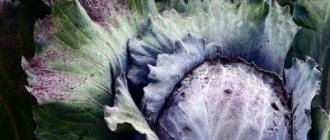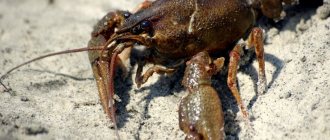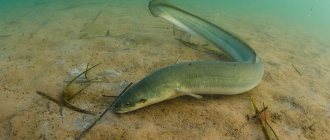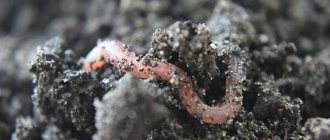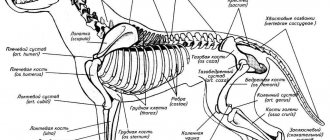4.2
Average rating: 4.2
Total ratings received: 1005.
4.2
Average rating: 4.2
Total ratings received: 1005.
The phylum arthropods include the class of crustaceans, representatives of which are the crayfish family. They live in fresh water bodies. The animals are nocturnal; during the day, individuals hide in their shelters under snags, stones and other objects at the bottom of the reservoir. After reading this material, you can learn more about the structure of crayfish and its internal organs.
Description
Crayfish is a typical representative of higher crustaceans. It can be found in fresh water bodies, where in summer the water warms up to 22 degrees above zero. The main activity of crayfish occurs at night, and during the day they hide in burrows and under snags. Crayfish meat is considered a delicacy. It began to be used as food in the 17th century. This dish can be found in the cuisines of different nations of the world. Crayfish are also actively used in medicine, dietetics and cosmetology. Today, crustaceans are bred on an industrial scale, in particular in China, the USA, Turkey and Germany.
Economic importance
Crayfish are eaten. Crayfish are boiled, fried in oil with the addition of white wine, sour cream, cloves, cumin, pepper, etc.; They make a special crayfish sauce (a mixture of broth, flour and butter).
Crayfish are traditionally considered one of the best snacks for beer, but not all parts of the crayfish carcass are edible; they eat only the meat of the claws and tail. Consumption of crayfish is an important part of traditional Scandinavian culture, including the "crawfish party" (Swedish: kraftskiva; Finnish: rapujuhlat; English: crayfish party), a celebration celebrating the end of summer (in August).
Like other scavengers, crayfish can often be carriers of diseases dangerous to humans, such as typhus and group A hepatitis. In Judaism, crayfish are prohibited as food for Jews, as they do not meet the criteria for kosher animals.
Description of the structure of crayfish
A description of the structure of crayfish will allow you to learn more about this aquatic inhabitant and accurately distinguish it from other representatives of crustaceans. The body of the animal reaches 15-30 centimeters in length. On top it is covered with a shell of chitin (shell). The color of the crayfish may vary depending on its habitat. The most popular colors: brown-green, blue-black (close to cobalt) and brown. The crustacean needs this color scheme in order to camouflage itself at the bottom of the reservoir.
The creature's body has two main sections: the abdomen and the massive cephalothorax. © https://ydoo.info/product/rechnoy-rak.html At the top of the head there is a sharp spike (chitinous), and on the sides there are two bulging eyes. The latter have a complex structure and are located on movable stalks. Chitinous mustaches grow next to the eyes - two pairs of long and two short. They perform tactile and olfactory functions.
The cancer's mouth is modified limbs. The upper jaw is represented by the first pair, and the lower jaw by the second and third. Under the shell of the cephalothorax there are gills, which play the role of the respiratory system.
The animal's chest has eight segments, each of which has a pair of single-branched limbs:
- four pairs of walking legs;
- one pair of claws, which are necessary for attack, defense and holding;
- three pairs of jaws that capture and deliver food to the mouth.
The abdomen is represented by seven segments, on which there are five pairs of two-branched legs, which the crayfish needs for swimming. The last segment of the abdomen and the sixth pair of legs are connected to form a caudal fin.
This is interesting! Male crayfish are very different from female crayfish. The latter have wider abdominal segments and less powerful claws. The dimensions of females are somewhat smaller.
Internal organ systems
An animal's body cavity consists of a complete set of organ systems.
The nervous system of crayfish consists of a peripharyngeal ring and a nerve chain located in the abdomen. These individuals have well-developed nerve ganglia, namely the suprapharyngeal and subpharyngeal ganglia. From the first of them, the nerve endings diverge to the organs of smell, touch and vision. The subpharyngeal node controls the oral opening. Branches from the abdominal chain diverge to the limbs and internal organs.
Considering the pattern of blood circulation, we conclude that a closed circulatory system is not typical for crustaceans. Blood flows through the vessels directly into the cavity and enters the internal organs. Having given them nutrients and oxygen, it returns to the heart through the vessels.
One of the features of crayfish is that representatives of crustaceans can be classified as “noble” animals, since they have blue blood. Most animals and humans contain the respiratory pigment hemoglobin in their blood, which is rich in iron and red in color. Instead, crayfish have the pigment hemocyanin, which is rich in copper.
Representatives of the crayfish class
There are quite a lot of representatives of the crayfish class, all of them are decapods. But among them two of the most interesting can be identified, namely:
- Broad-toed crayfish. Representatives of this species have a significant life expectancy - up to 25 years, but today they are quite rare. Broad-toed crayfish live exclusively in clean water.
- Narrow-toed crayfish. It is distinguished by a slender body and elongated claws. This type of cancer can live in almost any body of water, even quite polluted one.
During the daytime, any representatives of crayfish sleep in burrows, under snags and stones. And at night they go out hunting. A distinctive feature of these animals is their peculiar movement: crayfish move backwards, and if they are frightened, they immediately swim away.
Artificial breeding of crayfish
On a crayfish farm, several forms of crayfish should be introduced into water bodies, since different forms usually occupy different ecological niches and do not compete for food. Signal crayfish are promising in cold-water bodies of water, and red swamp crayfish and white river crayfish are promising in dry-water reservoirs. Red crayfish is also cultivated in rice fields.
Photo of red swamp crayfish
In the photo there is a white crayfish
Breeding methods
Crayfish farming is done in two different ways.
Prudovy
With the pond cultivation method, captured crayfish breeders are planted in drainage ponds with an area of 0.1 hectares of varying depths. Natural spawning of crayfish occurs in the ponds. Producers are caught at feeding areas. The hatched larvae are removed from their swimming playpod legs. The remaining crayfish are caught after the first molt by draining water from the pond. Some young crayfish burrow into the mud and are difficult to collect. The final catch is carried out with fresh water supplied.
Factory
The factory method is just beginning to be mastered on crayfish farms. The nursery includes a hatchery, nursery and brood ponds. With a capacity of 5 million larvae, the hatchery includes ten tanks (size 2.5 x 6 x 1 meter) and racks with Weiss apparatus. Water is supplied to the pools through flutes, and it is discharged by gravity through chandron openings. The nursery ponds have an area of 0.5 hectares with zones 0.3-1.5 m deep. At the discharge there is a crustacean reservoir measuring 1.5 x 0.5 m. The water in the ponds should have a pH of 7.8, an oxygen level of 3-4 mg/l. The rate of oxidation is from 5 to 9 mg per 1 liter. Filling of crayfish ponds is carried out 2 weeks before planting the crayfish. Mother ponds are pools and ditches in which spawning female crayfish caught in natural reservoirs are kept.
Food and accommodation features
The diet and living habits of crayfish distinguish them from other crustaceans. These inhabitants of reservoirs, which, by the way, live in any fresh, clean reservoirs where the water warms up to 22 degrees in the summer, are considered omnivores. They are even capable of devouring their own kind (especially defenseless ones and after molting).
In the first years of life, crayfish feeds mainly on plant foods, but feasts on insect larvae and snails. At one year of age, crustaceans begin to eat plankton and water fleas. Crayfish also feed on carrion, tadpoles, and worms, which fishermen use to catch these animals. Interestingly, females eat much less frequently, but eat larger amounts of food at one time.
The lifespan of crayfish has not yet been fully studied. But long-term studies have made it possible to determine an approximate figure - about 8-10 years. It is also known that cancer is a heterosexual creature. Sexual maturity occurs at 3 years in males and 4 years in females. The latter are capable of laying up to eight hundred eggs at a time.
Reproduction. Development
Crayfish have developed sexual dimorphism. Fertilization is internal. In the male, the first and second pair of abdominal legs are modified into a copulatory organ. In the female, the first pair of abdominal legs is rudimentary; on the remaining four pairs of abdominal legs, she bears eggs and young crustaceans.
Fertilized eggs laid by the female (60-200 pieces) are attached to her abdominal legs. Egg laying occurs in the winter, and young crustaceans (similar to adults) appear in the spring. Having hatched from the eggs, they continue to hold on to the mother's abdominal legs, and then leave her and begin an independent life. Young crustaceans feed only on plant foods.
Composition of crayfish meat
Crayfish meat contains 15.5% proteins, 1% carbohydrates, 1% fats and 0.13% cholesterol. This makes meat dietary, so its consumption is accessible even to those who are watching their figure.
Crayfish meat is rich in useful minerals, including chlorine, nickel, molybdenum, calcium, phosphorus, potassium and sulfur. And in terms of the amount of iodine, such a delicacy surpasses even beef. Among the vitamins, cancer contains A, B1, B2, C, D, E, PP. The crustacean shell contains a huge amount of biologically active substances and chitin.
Test on the topic: “Class Crustaceans”
Time limit: 0
Navigation (job numbers only)
0 out of 10 tasks completed
Questions:
- 1
- 2
- 3
- 4
- 5
- 6
- 7
- 8
- 9
- 10
Information
Instructions: “You are offered tasks with one or more correct answers out of five or more proposed.”
You have already taken the test before. You can't start it again.
The test is loading...
You must log in or register in order to begin the test.
You must complete the following tests to start this one:
results
Correct answers: 0 out of 10
Your time:
Time is over
You scored 0 out of 0 points (0)
| Average result |
| Your result |
Categories
- No category 0%
maximum of 15 points
| Place | Name | Recorded | Points | Result |
| Table is loading | ||||
| No data | ||||
Your result has been recorded in the leaderboard Loading
- 1
- 2
- 3
- 4
- 5
- 6
- 7
- 8
- 9
- 10
- With answer
- With a viewing mark
- Task 1 of 10
1.
Features of the circulatory system of crustaceans
Right
Wrong
- Task 2 of 10
2.
Respiratory organs of crustaceans
Right
Wrong
- Task 3 of 10
3.
Crayfish excretory organs
Right
Wrong
- Task 4 of 10
4.
The oral organs of the crayfish are presented
Right
Wrong
- Task 5 of 10
5.
The claws, as well as the jaws of the crayfish, provide
Right
Wrong
- Task 6 of 10
6.
The crustacean nervous system includes
Right
Wrong
- Task 7 of 10
7.
Sense organs of crustaceans
Right
Wrong
- Task 8 of 10
8.
Crayfish breed
Right
Wrong
- Task 9 of 10
9.
Crustaceans include
Right
Wrong
- Task 10 out of 10
Benefits and harms
Everyone who plans to consume such a food product should know the benefits and harms of cancer. The beneficial properties of this type of meat are truly invaluable, since it is considered easily digestible. This product is valued for its amazing taste (crayfish is tasty without any seasonings), and also for the fact that when consumed regularly:
- vitality increases;
- immunity improves;
- metabolic processes are accelerated.
In addition, regular consumption of crayfish is an opportunity to improve the condition of the cardiovascular, nervous, musculoskeletal systems, liver and thyroid gland. And the chitinous shell of the crustacean has an antiseptic and wound-healing effect.
In general, we can conclude that the benefits of crayfish are obvious to every person. Thanks to the special composition of the meat, blood vessels and bile ducts are cleansed, the activity of the pancreas and thyroid glands is toned, damaged tissues are restored through accelerated regeneration, and the removal of radionuclides and toxins from the body is activated. Frequent consumption of boiled crayfish is an opportunity to normalize carbohydrate metabolism, improve the condition of the skin and rejuvenate the body as a whole.
The harm from cancer is explained by a possible allergy, since this product has a unique and rather specific chemical composition. The strongest allergen is a protein found in cancerous meat. But individual intolerance can occur to any component of this product.
It is important! Iodine, which is present in cancer, can only help as a preventive measure. But meat will not help in the treatment of thyroid diseases. In addition, it is better to avoid its use if there are serious endocrine disorders, since excess iodine can have a negative effect.
Do not forget that only fresh crayfish can be cooked. If you omit this, at first glance, such a simple recommendation, then there is a high probability of “earning” problems with the gastrointestinal tract.
Preventing mass mortality of crayfish on the farm
If the following indicators are detected:
- convulsions, unusual movements of crayfish;
- the cover of the cancer is changed (ulcers, blood clots on the gills, hardened substances, white coloration of the underside of the tail, etc.);
- parasites noticed;
- the number of sick crayfish corresponds to dead ones;
- changes in water in diversion ponds (surface films, turbidity, color, smell, etc.),
then it is urgent to take measures to prevent the death of crayfish. From a body of water where any changes, illness or death of crayfish are noticed, it is necessary to take water for examination (always in clean bottles). Also, for research, you should take 5-7 dying or dead crayfish. Dead crayfish are wrapped in wet parchment paper. You cannot use plastic bags! Dead crayfish can be preserved in formalin solution (4%). Live crayfish are transplanted into a cardboard box with grass or moss. These crayfish are also sent for research.
| Read the article about catching crayfish |
Fishing tips
Fishing tips will help you catch crayfish in their natural habitat. This procedure is simple, and anyone can easily handle it. There are many ways to catch crayfish, but the most common are:
- manually (not the most “pleasant” method);
- a special crayfish catcher (homemade or purchased);
- shoe (folk device);
- with a fishing rod (the longest way).
Catching with your hands is extremely simple. We need to find crayfish holes and get their inhabitants out of the shelter. Of course, the animal will defend itself, so it can be unpleasant. Finding holes is not difficult, just move slowly along the coast of the reservoir (mainly where reeds grow), carefully feeling the bottom.
The clamshell is a great alternative. You need a net and rope, with which you can easily make homemade tackle. You should lay out the net at the bottom of the reservoir, first tie a rope to it, put the bait in the center and wait. Every 20-30 minutes you need to check: perhaps the crayfish have already crawled in search of prey. When using a purchased analogue, the algorithm of actions is similar: the product with bait must be immersed in water and wait until the crayfish crawl inside.
The shoe method is practically no different from the crayfish trap, but it is somewhat inferior in efficiency. You need to put the bait inside the shoe, tie a rope to the edge of the back and lower it to the bottom. It will take a little longer to catch, but there is still a chance to catch the crayfish.
Catching crayfish with a fishing rod is a difficult task. But you can try. You need to fix the bait on the hook, cover it with nylon and lower it into the water. Please note that the fishing line must be thick, otherwise the crayfish will simply bite it with its claw and run away.
In addition, it is important to know where the best places to catch crayfish are. The following areas are ideal:
- Coast with cliffs. Crayfish settle here if there is a drop in the river below the coastline. A prerequisite is the presence of peat or silt at the bottom of the reservoir.
- Coastline with stones. This is one of the most attractive areas for crayfish. They will settle under cobblestones, constructing burrows.
- Sandy bottom. The main advantage is simple crayfish hunting. Algae in such reservoirs is usually quite small, the bottom is clearly visible, so hunting for crustaceans will definitely be successful.
- Backwaters with snags. Crayfish live here in huge numbers. It is in such places that large specimens can be found.
- Burrows and holes in the ground. They can be seen in places where the banks have cliffs. Typically, crayfish create burrows with a diameter of about five centimeters, which are very easy to detect with the naked eye.
- Shell rock. If the bottom is strewn with this material and there are reeds nearby, crayfish are probably also living here.
- Banks in water. If you notice similar “decor” on a pond, there is a high probability that crayfish live in it (provided that the reservoir itself is clean enough).
Incubation apparatus (IRIK)
The incubation apparatus is a box with a set of cells; an egg crayfish is placed in each cell. The cell initially contains females with embryos, and then with crayfish larvae, which are kept in the apparatus until the end of the first molting of the grown-up juveniles. The capacity of the IRIK is 50 female crayfish, the cell dimensions are 150 x 50 x 45 mm. At the bottom of the cell there should be a 1 cm wide gap where the crayfish larvae will emerge after the first molt.
Figure 5. Incubator for cancerous females
One lid is intended for ten cells (20 holes with a diameter of 1 cm are made in the lid above each cell - this is done to improve water exchange). The covers are located under water. The shelf with the described cells is installed in a seven-story rack.
How to choose crayfish in a store?
How to choose crayfish in a store? This question interests those who are sure that catching crayfish on their own is not suitable for them. You should remember a few rules so as not to purchase a low-quality product. The main requirement is that you only buy live crayfish. And also pay attention to mobility. Cancers should move their whiskers or limbs. Inactivity indicates that the cancer is sick or has been in the water for more than two days. You should refuse such a purchase.
If you want to buy boiled crayfish, the selection criteria will be as follows:
- color saturation (it should be red and uniform);
- odors (any foreign or unpleasant odors should be absent);
- cleanliness of the shell (dirt, stains and damage must be excluded).
When purchasing a cooked product in packaging, you should pay attention to the expiration date and production date. Remember that packaged crayfish can be stored for no more than four days.
Crayfish diseases
Diseases of decapod crustaceans are divided into 2 groups:
- Infectious.
- Invasive (caused by parasites).
When breeding aquatic animals, diseases are most often caused by contaminated or poisoned water, as well as by a reduction in feeding or a reduction in hiding places. Because of this, crayfish’s resistance to disease decreases and their general condition weakens. As a result, microorganisms, often harmless, cause inflammation. Diseases can form when crayfish receive injuries or wounds.
Crayfish plague
The most dangerous disease that can wipe out crayfish farming as a business is crayfish plague. The causative agent is a fungus that develops in the integument of a cancer patient. Cancer death occurs within a few weeks. The essence of the disease is that the fungal web grows in the cover of the cancer. Zoospores are separated from this web. A fungal web grows from zoospores and infects healthy crayfish.
Symptoms of crayfish plague:
- Lethargy of cancer.
- The gait of cancer is rocking.
- The tail is tucked under the belly.
- The cancer's legs are straight (as if made of wood).
Disease prevention:
The disease can spread when diseased crayfish are transplanted from an infected body of water to a clean body of water through contaminated gear. To prevent the disease, on a crayfish farm, transplanting gear must be disinfected even when crayfish plague is not detected in the reservoir.
Disinfection of gear:
- Boiling. Tackle made from artificial fibers cannot be boiled. All other gear must be kept in boiling water for at least 5 minutes.
- Treatment with formaldehyde. Preparation of the solution: 1 part 38% formaldehyde to 10 parts water. The gear is kept for at least 20 minutes in a prepared 4% formaldehyde solution.
- Freezing. Used for disinfection of crates for transporting crayfish and cages. That is, freezing is used for those gear that are difficult to disinfect in solutions. The gear is kept at a temperature of -10°C for three days. For additional disinfection, gear should be stored in an unheated room in winter.
- Treatment with alcohol. Preparation of the solution: 3 parts alcohol to 1 part water. This solution can be used to disinfect plastic utensils, rubber boots, pumps, inflatable boats and other plastic and rubber items.
- Drying:
- in a Finnish sauna (for large items) at 80°C for at least 5 hours;
- in the sun (rubber gear and clothing);
- in a bath (for small items) at a temperature of 70°C for no less than 1 hour.
Photo of a “hole” for crayfish made from scraps of plastic pipes
Burn disease
This is a fungal disease.
Symptoms of burn disease:
Spots with a diameter of 10-30 mm form on the cover of the cancer. The spots may be black-brown or black with a red border. The spots are better visible on boiled crayfish. Disease prevention:
destruction of sick individuals.
White tail disease
This is a parasitic disease.
Symptoms of white tail disease in crayfish:
In advanced stages of the disease, the underside of the tail becomes white due to sporozoa.
Disease prevention:
destruction of sick individuals.
Annelids
Another pathology that is caused by parasites is the formation of annelids on the cover of cancer. These worms can be distinguished with the naked eye. The worms are 3-6 mm long. Annelid eggs are found on the belly of the crayfish and are bright white in color. Farmed crayfish infected with the worm can be eaten. These worms do not harm crayfish.
Recommendations for preparation and use in cooking
Recommendations for preparation and use in cooking will be useful to every housewife. The first thing you need is to become familiar with the cooking technology. It involves the following main steps:
- cooking broth from carrots, parsley, dill seeds, salt, pepper (peas), bay leaf, celery root and cloves;
- cooking crayfish in broth for 10-12 minutes.
Proportions are selected individually depending on the number of crayfish. On average, for 10 crayfish it is enough to take one carrot, a medium bunch of herbs and a small amount of spices. You will get a rich liquid.
Advice! Many gourmets are experimenting with traditional broth. They often add white wine, cucumber pickle, and even beer to the broth. It's a matter of taste.
Not everyone knows that crayfish can not only be boiled. This product can be prepared as follows:
- stew in milk;
- bake in the oven, sprinkled with Parmesan;
- fry in oil;
- add as an ingredient to fish soup;
- add to fresh salad (cleaned meat);
- stew with vegetables (for example, tomatoes);
- add to the side dish along with other seafood;
- Boil in beer, wine or kvass.
The most popular dish remains boiled crayfish, which is eaten as a separate dish or snack. Also popular are soup with crayfish (it is richly seasoned with vegetables and herbs) and crayfish aspic (reminiscent of jellied meat).
It will be useful to familiarize yourself with the ingredients that perfectly highlight the taste of crayfish. Among the herbs and spices, it is worth highlighting thyme, bay leaf, nutmeg, and red pepper. Vegetables and fruits you can use are onions, potatoes, tomatoes, celery, carrots, leeks, avocado, lemon. Among the dressings, you should pay attention to cream, table wine, vegetable oil (olive and sunflower), milk, beer. Crayfish also goes well with chicken eggs, chicken, rice and seafood.
Many housewives are concerned about the question of how to properly store crayfish. First of all, you need to decide on the dishes. It is not recommended to use metal containers. Crayfish meat contains a significant amount of sulfur. This leads to the fact that when it comes into contact with metal, the product begins to turn black and deteriorate. A suitable alternative is glassware.
The shelf life of boiled crayfish is as follows:
- for two hours in the fresh air;
- 3-4 days in an airtight container in the refrigerator;
- 3 months in the freezer.
Crayfish breeding standards
| Standard | Unit change | Qty |
| Pond area for producers | ha | 0,25 |
| Mother pond depth | m | 1,5-2 |
| Filling duration | days | 2 |
| Lifespan of producers when growing crayfish for sale | years | 5 |
| Annual replacement of manufacturers | % | 20 |
| Water exchange in crawfish ponds | days | 10 |
| Giving food 1-2 times a week | % | 4 |
| Area of ponds for repair | ha | 0,5 |
| Age groups | years | 2-3 |
| Pond depth | m | 1,5-2 |
| Water exchange | days | 10 |
| Feeding the replacement flock | Daily | |
| Female fertility | PC. | 250 |
| Stock of breeding females | % | 20 |
| Average weight of females | G | 70 |
| Planting density in pools | pcs./m² | 200 |
| Departure of females in the pool | % | 10 |
| Duration of keeping the producers in the pool | days | 20-30 |
| Water exchange in swimming pools | h | 7-10 |
| Pool area | m² | 15 |
| Water depth in pools | m | 1 |
| Pool sizes | m | 2.5 x 6 |
| Departure of females for transportation | % | 5 |
| Suspended particles content | mg/l | up to 600 |
| Temperature | °C | 7-26 |
| Incubation device - number of cells | PC. | 50 |
| Cell size | cm. | 15 x 5 x 4.5 |
| Number of trays per rack | PC. | 67 |
| Rack unit dimensions | cm. | 86 x 63 x 80 |
| Duration of holding females | days | 2-20 |
| Water exchange in the pool | h | 5-7 |
| The emergence of larvae after two moults | % | 90 |
| Duration of larvae incubation | days | 12-15 |
| Feeding larvae in pools | days | 1 |
| Daily diet (zooplankton: vegetation 1:1) | % | 3-4 |
| Time frame for filling nursery ponds | days | 10-15 |
| Pond area | ha | 0,5 |
| Depth | m | 0,3-1,7 |
| Water exchange in ponds | days | 12-20 |
| Daily diet based on cancer weight | % | 4 |
| Density of larvae in the pond | thousand pieces/m² | 500 |
| Duration of transportation of fingerlings: in a humid environment in a dry environment | h h | 48 8-10 |
| Commercial return from fingerlings in a natural reservoir | % | 20 |
| Weights of market-grown crayfish | G | 40 |
Application in cosmetology and medicine
The use of crayfish in cosmetology and medicine is very common. With their help, specialists have learned to heal the human body and cope with diseases of the liver and thyroid gland (cancers are used as a component for medicines). These products are recommended in the diet for the prevention of heart failure, kidney and pancreas problems. And also regularly eating crayfish is an opportunity to improve metabolism.
Since ancient times, crayfish have been used as a natural antiseptic. The chitinous shell of the crustacean was ground into powder, which was used to treat purulent wounds and ulcers. Currently, a substance such as chitosan is obtained from the cancer shell. It is subsequently used to treat immunological disorders, malignant tumors, as well as to cleanse blood vessels and reduce cholesterol levels in the blood. Based on the same substance (chitosan), regenerating ointments, contact lenses, surgical threads, bactericidal patches and some other medicines are prepared.
Experts often recommend using the product for those who plan to lose excess weight. In terms of nutrients, crayfish are ahead of shrimp and oysters. All this, together with its low calorie content, makes the product one of the most valuable for a weight loss program. In particular, crayfish can replace a full meal. Their use is allowed even if you follow the “Kremlin” diet, which is famous for its strict restrictions. Crayfish will be especially useful in combination with cucumbers, broccoli, apples, boiled fish, seafood, beans and spinach.
In cosmetology, the area of use of crayfish is no less significant. Here, too, the main emphasis is on the use of chitosan. It is included in lotions to moisturize the skin, creams, masks and products to protect the skin from UV radiation. In addition, chitosan is used to prepare products that effectively fight fat cells, helping to break down cellulite. The main advantage of such cosmetic preparations is naturalness, harmlessness and non-toxicity.
Regular consumption of cancer is an opportunity to improve your own body. In addition, this product contains components that can have a beneficial effect on a person’s appearance and improve his mood. At the same time, crayfish is a surprisingly tasty dish that will appeal to even the most discerning gourmets.
Digestion and excretion
The digestive system of crayfish is represented by the mouth, pharynx, esophagus, stomach, intestines, ending in the anus. It has its own characteristics. So, the stomach consists of two sections. In the larger one, food is ground using chitinous teeth, and in the second it is filtered through a straining apparatus. Another feature is that the final process of breakdown and absorption of substances occurs in the digestive gland. Food enters this organ from the intestines.
Green glands are excretory organs. They are paired. Excretory tubules extend from them, which open at the base of the antennae. The products of their excretion are toxins dissolved in the blood.
